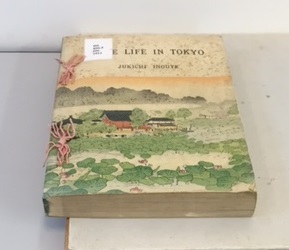Smithsonian Libraries and Archives Preservation Team recently had the opportunity to participate in a three-day workshop exploring various binding techniques for atlas structures at our Book Conservation Lab in Landover, more »
Tag: book repair
This post was written by Ludivine Javelaud, intern in the Book Conservation Lab. I am currently a conservation graduate student at the Institut National du Patrimoine in Paris and I more »
Earlier this year, two music manuscripts arrived in the book conservation lab from the Dibner Library for the History of Science and Technology. These two small items, James Bishop’s musical Gamut of 1766, and Uri Bishop’s Military Music from the War of 1812, were part of a donation earlier in the year by James L. Cerruti and his sister Vera V. Magruder. The generous gift was featured in a Smithsonian Libraries blog post by Liz O’Brien, “Donations Reveal a Family History”.

A few months ago, a book from the Freer Gallery of Art and Arthur M. Sackler Gallery Library came for treatment to the Book Conservation Lab: Home Life in Tokyo. Our copy, printed in 1911, is a softback binding, common for Japanese publications, and according to the bibliographic record, it was “issued in a portfolio.”

The book itself was in very good condition, however, after many years of protecting the soft-backed book, the portfolio enclosure had become damaged and was no longer functional. One spine piece of the structure had completely failed at its hinges; the decorative printed cloth and the paper linings had broken. The spine cloth fortunately was saved and sent along with the item.
A book, The Flying Spy, from the National Air and Space Museum Library came to the Book Conservation Lab with a unique, though not exactly rare, problem: Pest Damage. more »
Older hardcover books within the Smithsonian Libraries’ circulating collections often contain unique information which serve staff and patrons over the course of many years. With age and use, these items sometimes begin to break along the hinges. The book cloth becomes frayed, torn, or cracked and the spine piece may separate completely from the boards. This damage necessitates a repair which will conserve and recreate the original binding structure as much as possible.
Fold-out plates are often used to feature important illustrations or diagrams in many books related to science, technology, and history. Though a fold-out is designed to be frequently folded and unfolded, the stress on the creased fold lines from constant handling often causes the paper to break.


